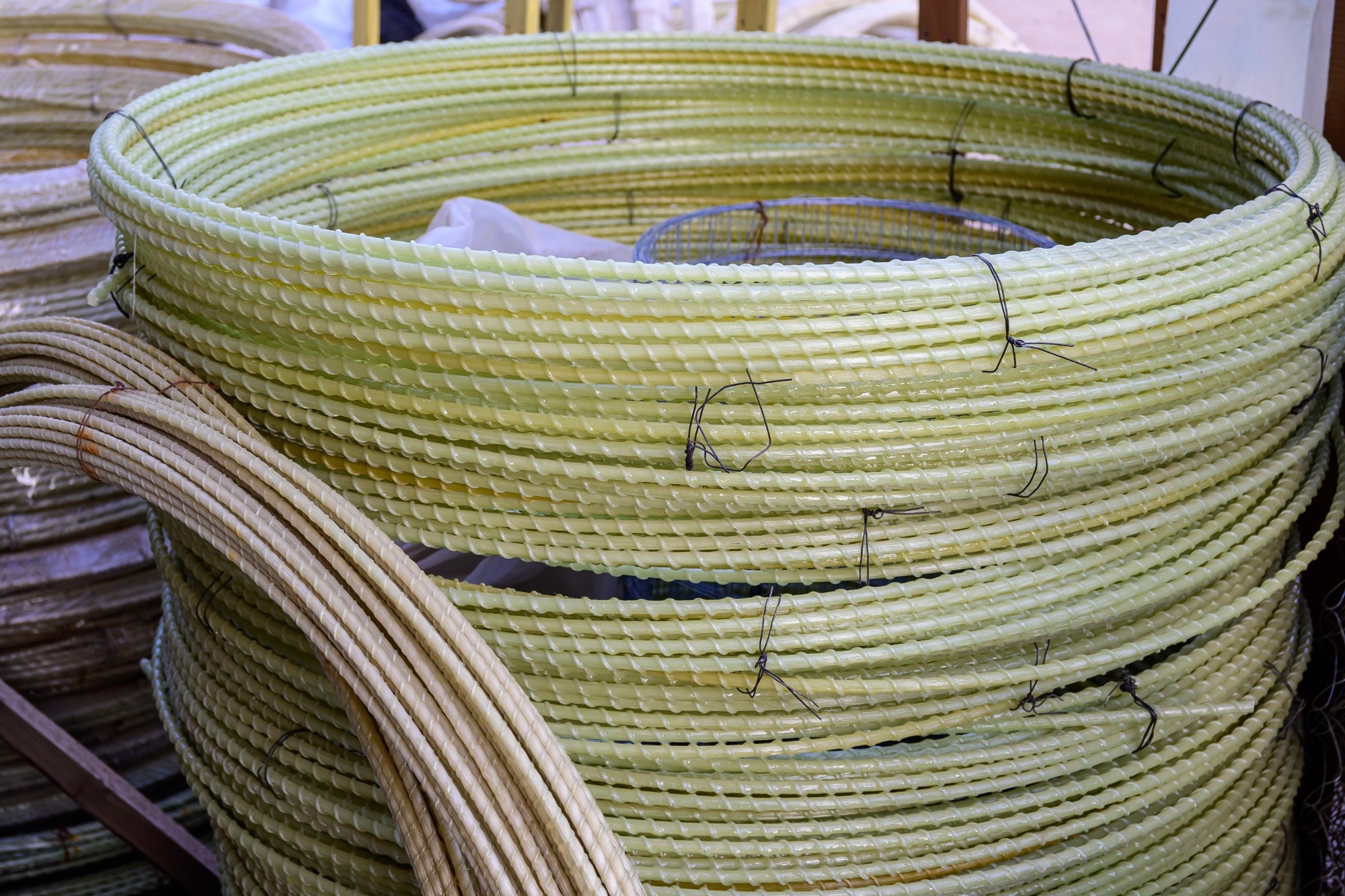 By Nidhi DhullReviewed by Susha Cheriyedath, M.Sc.Jun 3 2024
By Nidhi DhullReviewed by Susha Cheriyedath, M.Sc.Jun 3 2024A recent article published in Case Studies in Construction Materials investigated the long-term behaviors of alkali-activated fiber-reinforced composites (AAFRCs) cured at ambient temperature. Several mechanical tests were performed on AAFRCs with three different curing ages.
 Study: Long-Term Performance of Fiber-Reinforced Composites. Image Credit: Aleks Images/Shutterstock.com
Study: Long-Term Performance of Fiber-Reinforced Composites. Image Credit: Aleks Images/Shutterstock.com
Background
Concrete is the most widely used building material due to its high strength and accessibility as a highly available raw material. However, its inherent brittleness is a significant challenge. Simultaneously, alkali-activated composite materials have emerged as sustainable alternatives to traditional cement-based materials. However, they also suffer from brittleness like ordinary concrete materials.
Engineered cementitious composites (ECCs) reinforced with fibers offer a viable solution to improve the ductility of alkali-activated composite material. Multiple researchers have studied the unique properties of AAFRCs, including ductility, strain-hardening behavior, and self-healing ability. However, these studies lasted a maximum of 120 days without investigating the mechanical properties of AAFRCs cured for longer ages. Thus, this study focused on AAFRCs cured for 1, 28, and 365 days and examined their long-term use and durability.
Materials and Methods
AAFRC specimens in dumbbell and cube molds were prepared using finely ground GGBS (ground granulated blast furnace slag), fine sand (ordinary river sand), polyethylene (PE) fiber (for reinforcement), Na2SiO3-NaOH alkali activator, and tap water. After curing for 24 hours, the molds were removed, and specimens were allowed to cure for 1, 28, and 365 days (denoted as 1d, 28d, and 365d, respectively).
A compression test was conducted on the cubic specimen as per the American standards, while a uniaxial tensile test was performed on the dog-bone-shaped specimens. An electronic universal machine was used to impose the quasi-static loading during these experiments.
A three-point flexural test was performed using a beam-shaped mortar specimen without PE fiber using a displacement-controlled loading method. It helped determine the matrix fracture toughness and energy, indicating the material's ability to impede crack expansion. In addition, single-crack tensile testing was performed to investigate crack propagation in the fabricated AAFRC by determining the maximum bridge stress and residual fiber bridging energy.
Digital image correlation (DIC) technology was employed to characterize the crack propagation distribution during the stress process. During compression and tensile tests, a digital camera was positioned in front of the specimen, and images were captured at intervals of 10-15 seconds. The acquired images were subsequently processed using MATLAB (Matrix Laboratory) software.
The composite surface and fiber morphology were analyzed using scanning electron microscopy (SEM) and energy-dispersive X-Ray spectroscopy (EDS). Furthermore, embodied energy and carbon emissions of solid waste-based materials were calculated to assess the sustainability of the proposed AAFRC.
Results and Discussion
AAFRC fabricated in this study exhibited early strength characteristics. The compressive and tensile strengths of 1d were 34.6 MPa and 2.66 MPa, respectively. The former became stable at 74.9 MPa after 28 days, exhibiting a similar value (74.4 MPa) for the 365d specimen. In addition, the tensile strength and tensile strain reached the maximum after 365 days.
The minimal change in the compressive strength of AAFRC was attributed to the positive hydration effect combined with negative effects such as autogenous shrinkage, which indicates good durability overall.
DIC analysis cloud maps helped visualize the formation and propagation of cracks and could be used to reliably predict the direction and position of cracks to some extent. The cracks were evenly distributed in the tensile zone of the AAFRC specimens. Specimens of different curing ages exhibited multiple saturated cracks, which increased with increasing age.
When it came to the sustainability assessment, AAFRC exhibited less energy consumption and lower carbon emissions compared to classic ECCs using polyvinyl alcohol or limestone calcined clay cement. Though the fabricated composite did not have the lowest embodied energy, it exhibited the lowest carbon emissions. The reduction in embodied energy compared to concrete was attributed to the use of mineral powder and silica fume as binding agents.
SEM analysis demonstrated the failure modes of fibers at different ages, which explained the tensile strength and strain of the specimens while EDS identified the primary polymerization products, calcium aluminosilicate hydrate (C-A-S-H) gel and sodium aluminosilicate hydrate (N-A-S-H) gels. An extended curing time was beneficial for the generation of N-A-S-H gel, which enhances material performance.
Conclusion
Overall, AAFRC in this study exhibited high compressive strength after 28 days of curing and remained stable in the long term. Additionally, the tensile strain and tensile strength of AAFRC continued to increase throughout the curing process, reaching peak values after 365 days.
The observed mechanical properties of AAFRC were attributed to high fiber bridging complementarity with increasing curing time, as also evident from SEM analysis. The sustainability of AAFRC compared to conventional ECCs is highly promising.
Thus, the results of this study may act as a reference for the long-term practical application of this material. It can be engineered for the safety and stability of buildings in regions prone to natural disasters such as earthquakes.
Journal Reference
Kan, L. et al. (2024). Long-term behaviors of fiber reinforced alkali-activated composite cured at ambient condition: Mechanical characterization. Case Studies in Construction Materials, e03306. https://doi.org/10.1016/j.cscm.2024.e03306, https://www.sciencedirect.com/science/article/pii/S2214509524004571
Disclaimer: The views expressed here are those of the author expressed in their private capacity and do not necessarily represent the views of AZoM.com Limited T/A AZoNetwork the owner and operator of this website. This disclaimer forms part of the Terms and conditions of use of this website.